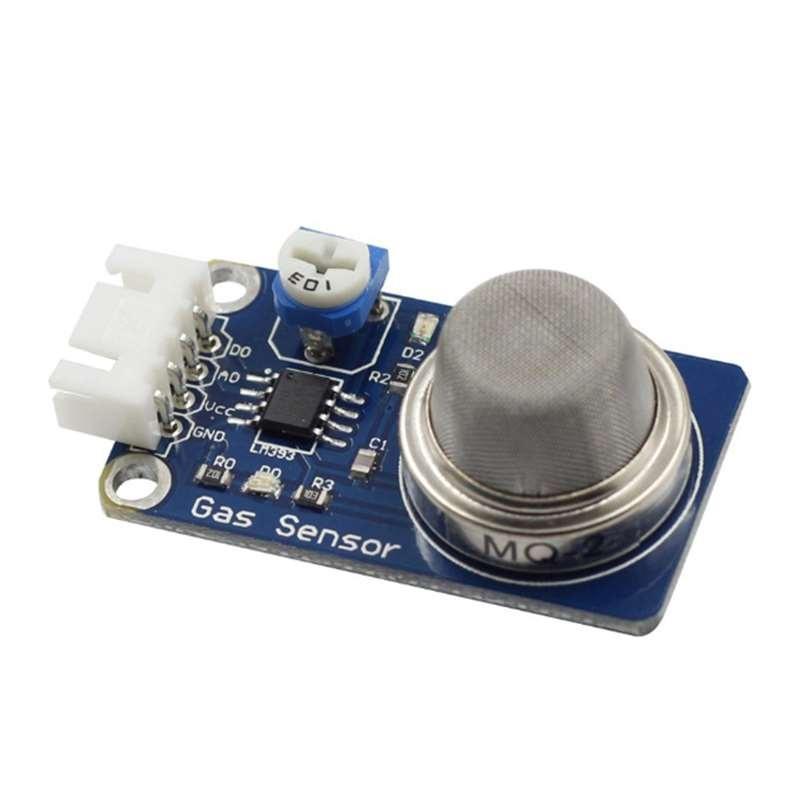Smart Gas Sensors Reshape Safety and Environmental Monitoring Globally

Gas sensors have become indispensable technologies for industrial safety, environmental monitoring, automotive applications, and healthcare diagnostics. The ability to detect and measure hazardous or trace gases rapidly and accurately is driving adoption across multiple sectors. In 2025, advances in nanotechnology, artificial intelligence (AI), and Internet of Things (IoT) integrations are revolutionizing gas sensing capabilities. These technologies not only improve performance but also enable smarter, connected detection systems that optimize safety and operational efficiencies worldwide.
According to Straits Research, the global gas sensor industry was valued at USD 1.67 billion in 2024 and is projected to rise from USD 1.81 billion in 2025 to USD 3.59 billion by 2033, growing at a compound annual growth rate (CAGR) of 8.90% over the forecast period (2025–2033). This growth is driven by expanding applications in smart infrastructure, industrial automation, and health monitoring, coupled with accelerated innovation in sensor materials and AI analytics.
Emerging Technology Trends
One of the most significant trends in gas sensors is the rise of nanotechnology. The use of novel nanomaterials like graphene, carbon nanotubes, and metal oxides enhances sensor sensitivity and selectivity at nanoscale dimensions, enabling detection of trace gases at previously unattainable levels. Nanotech sensors are also smaller and more energy-efficient, ideal for wearable safety devices and implantable health monitors.
Artificial intelligence integration is another transformative development. AI algorithms embedded within sensor systems enable real-time pattern recognition and predictive analytics, allowing devices to distinguish specific gas compositions, reduce false alarms, and provide actionable insights. This smart sensing facilitates predictive maintenance in industrial plants, ensuring timely response to potential leaks or hazardous conditions.
The proliferation of IoT connectivity is shaping gas sensors into networked devices providing live data streams to cloud platforms. This facilitates remote monitoring for smart cities, industrial facilities, and environmental agencies. IoT-linked gas sensors effectively track air quality, detect toxic leaks, and support regulatory compliance, boosting public health and safety.
Key Players and Regional Developments
The global gas sensor ecosystem features major companies such as Honeywell (USA), Figaro Engineering Inc. (Japan), Amphenol Advanced Sensors (USA), City Technology (UK), Dynament Ltd. (UK), and SGX Sensortech (Singapore). These players continually invest in R&D to advance sensor performance across electrochemical, infrared, catalytic bead, and MEMS-based technologies.
Asia-Pacific dominates in production and adoption, powered by China, Japan, South Korea, and India’s rapid industrialization and urbanization. India’s sensor manufacturers, including Remsons Industries, recently bolstered capabilities by acquiring sensor technology firm Uni-Automation, enhancing offerings in industrial and environmental gas sensing applications. China continues investments in smart cities and pollution monitoring fueled by government initiatives, pushing widespread sensor deployment.
North America is strengthening its portfolio with tech firms developing AI-enabled and wireless gas sensors for industrial automation, automotive emissions testing, and building safety. Companies like Honeywell focus heavily on integrating AI and IoT to create predictive, connected sensing solutions, catering to growing demand in smart infrastructure and energy sectors.
Europe, led by the UK, Germany, and the Netherlands, is expanding its sensor industry with increased research activities in flexible sensors and environmental monitoring networks supporting EU air quality directives. European firms are also innovating with multi-gas sensor platforms and wearable devices aimed at occupational safety and healthcare.
Recent Industry Highlights
A groundbreaking project in the UK spearheaded by gas network operators Cadent, SGN, and Gas Networks Ireland, in collaboration with sensor innovators, aims to develop new sensor technology enabling precise calorific value measurement of green gases like biomethane and hydrogen across distribution networks. This advancement will facilitate the green gas transition by providing fair billing and better network management, with pilot trials expected in 2026.
In India, Remsons Industries' acquisition of Uni-Automation in early 2024 enables enhanced industrial gas sensor solutions, raising India’s profile in sensor manufacturing for industrial automation and environmental monitoring, poised to serve growing regional demand.
On the semiconductor front, innovations in MEMS (Micro-Electro-Mechanical Systems) sensors continue to reduce sensor sizes while improving reliability and energy efficiency, enabling broader deployment in compact electronic devices, wearables, and automotive safety systems.
Growth Prospects
With growing awareness of air pollution and occupational safety, alongside rising industrial automation, gas sensors are accelerating adoption across sectors. Increasing regulations globally to limit emissions and improve indoor air quality propel demand for more advanced, multi-gas, and wireless sensor systems. The trend of embedding AI and IoT connectivity enhances data intelligence and operational efficiency, spurring additional uptake.
Emerging economies, particularly India, China, and Southeast Asia, present significant opportunities with expanding industrial bases and smart city projects requiring large-scale, networked gas sensor deployments. Cost-effective manufacturing innovations and regional partnerships are crucial to tapping these markets.
Sustainability concerns also foster demand for sensors monitoring greenhouse gases and enabling energy-efficient operations in oil, gas, and renewable energy sectors. The ongoing miniaturization and integration of sensors into consumer electronics and healthcare devices further diversify opportunities.
Summary
Gas sensors are undergoing a profound transformation driven by nanotechnology, AI, and IoT, enabling smarter, more sensitive, and connected detection across key sectors.
- Art
- Causes
- Crafts
- Dance
- Drinks
- Film
- Fitness
- Food
- Games
- Gardening
- Health
- Home
- Literature
- Music
- Networking
- Other
- Party
- Religion
- Shopping
- Sports
- Theater
- Wellness


